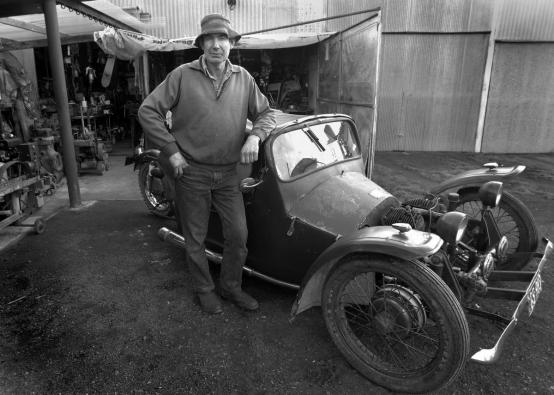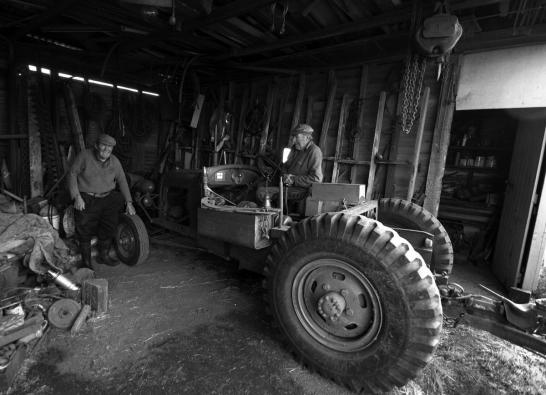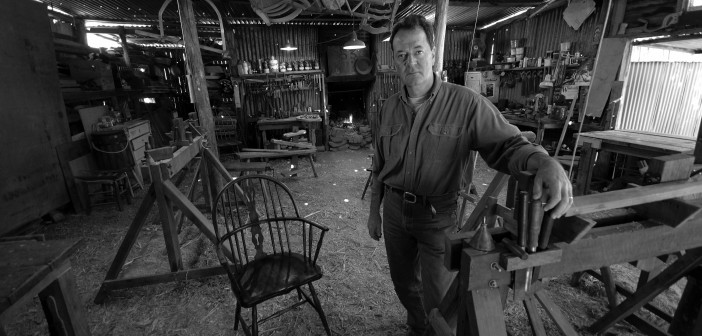A couple of decades ago, Dave, a mate of mine who was a gardener and general fix-it-up fella, came around to see me with a few old gardening tools. They were from the shed of an old bloke who had died recently and the widow had asked Dave to take the stuff away. Dave never had reason to go into that shed before and when he went in there, it was full of modest treasures – tools, gardening stuff, jars of nails and bolts in perfect order, nameless but obviously useful chemicals and solvents, drawings by grandchildren and so on.
All good stuff. And that stuff was about to disappear into the council tip under a whole pile of real rubbish like greasy pizza boxes and spent toothpaste tubes. Dave did rescue quite a bit of this good gear (which is a bit of a hazard in his occupation) and we chatted about how this old shed was a fairly complete snapshot of one bloke’s life – what he did, how he did things and what mattered to him. It was all about to vanish.
We realised that this was a kind of unofficial history that no-one had ever bothered to record.
There were no real photos of what sheds and backyard workshops looked like in 1957 or 1938 or 1911 because they seemed just too unimportant to record. Yet they would have been very important to their owners.
At the same time there was evidence that there was a trend – now a tidal wave – that was eliminating the shed from backyards. Increasingly, people were moving from small houses on big blocks to bigger houses on smaller blocks of land. The shed, along with the productive backyard, seemed to be on the verge of extinction, especially in our inner city areas.

So I set out to take photos of interesting sheds that were important to their owners and to have a natter with them about their sheds and what they did there. After a couple of years of driving around in my faithful Chrysler Galant station wagon and from my many chats in the nation’s backyard corrugated castles, the book Blokes and Sheds emerged.
To my surprise, it sold very well and made me ‘the shed bloke’ and useful for talkback radio producers wanting to fill 20 or 30 minutes of radio time. I couldn’t quite believe that people regarded me as some kind of expert just because I had spent some time nattering in sheds and, as a joke, one day I said on the radio I was from the ‘Institute of Backyard Studies’ (IBYS) – and they believed me. From then on, the joke just stuck.
In my role as ‘advanced research director’ at IBYS, people often ask me: what’s this shed stuff all about? And I tell them that from talking to men (and those for whom their shed was significant were nearly all men), it is about identity.
A shed is not really an escape; often it was more of a sanctuary. A still place in a world that is whirling around outside the shed like a cyclone. So still in fact that one bloke said: “I could put my 5/16th spanner on the corner of that bench and know it would still be there in three years time.”
Once you put it into religious terms such as saying the shed was a place of contemplation, people know you’re deadly serious…
Or you can look at the shed as a place where a person could build up a kind of personal geology, where layers of stuff condense and compress over the years, like coal into diamonds. To me there’s no doubt that a shed is a place to park your stuff but also a place to park your story.
A very important part of ‘the shed thing’ is a sense of usefulness. As people have moved into white collar/service industry jobs, a sense of real achievement seems less likely to be found at work. Thus the shed, rather than work, becomes the place where many men can find a tangible sense of capability.
Tangibility is a hugely important part of this quality, because if you’re in a modern white collar job, what have you got to show for yourself at the end of a week’s work? A 100 megabytes of data squared away on the hard drive? 251 stupid emails read and answered?
Where was the evidence that you had made a mark on the world? What could you point to and say absolutely and definitely that there is real proof you had put the best of yourself into that work?

So, many men turn to the shed as the place to get that particular kick. This sense of usefulness is hugely important. The marketing people in the big hardware and car parts chains know this, too. Interestingly, when Blokes & Sheds came out I received lots of letters from women saying that they now understood a lot more about what their husbands/fathers/sons/granddads were on about. I feel I made a big contribution to domestic harmony there.
In the interests of furthering Shed Science or Backyardism, as we call it, the research staff at the IBYS (without the aid of government research grants) has been developing what we are calling the ‘Unified Shed Theorem’.
To get our definitions right, we must first define the shed:
Shed = a building dedicated to function.
It could be a huge and complicated shed, a real Garage Mahal or an open-sided structure that just keeps the weather off the tools and the occupant. It doesn’t matter because, above all, what does matter is that it is functional.
In turn, from that definition we derive the ‘Unified Shed Theorem’:
Shed = practical = purpose = meaning.
In addition, intense research by our staff and associates over many years has revealed the ‘Five Principles of Shed Science’:
- Never throw anything out.
- I know where everything is.
- Yes, I need seven of those.
- Leave that alone.
- It works better that way.
Any shed that operates using the above definition, theorem and principles will be sure to be successful.
Mark Thomson’s own shed has been eaten by termites and he is now in the process of building another twice as large.
Further information about the Institute of Backyard Studies, its dubious products and books and even about joining as an ‘Associate’, can be found on the website at www.ibys.org




